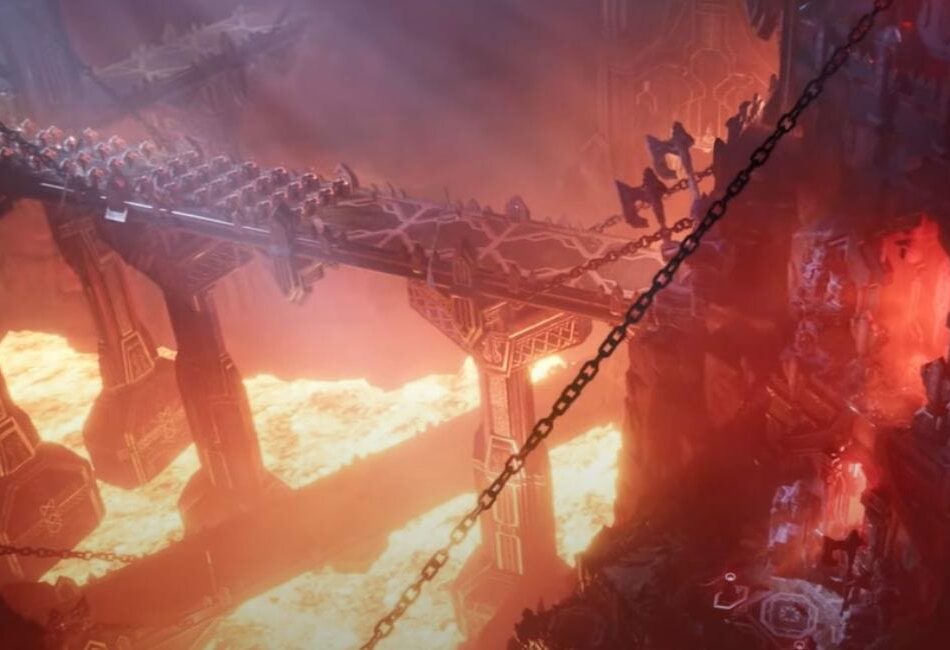Lava has always been a mystery; is it solid or liquid? Perhaps something else entirely? We know that lava would either instantly kill us or do massive damage in games, but how does lava work in D&D? Does it work like fall damage? Do we even take damage? Let me explain.
D&D is home to many weird and wacky situations. Falling from enormous heights, fighting underwater, or being stuck in a wall. New Dungeon Masters (DM) might find this daunting to try and figure out or struggle to find the exact ruling in the DM’s Guide (DMG).
I have been a dungeon master for nearly a decade now, and I understand those pains. So join me in this Lava Damage 5e guide to understanding environmental damage and, more specifically, Lava damage.
Lava Damage
First, let’s talk about lava before we detail other effects and hazards you can throw at your players.
Lava is in a unique situation wherein it does not explicitly state the damage lava deals with, but rather the DMG gives players a severity scale. This leaves the damage up to your interpretation, but here is my version of how much damage lava should do based on the occasion.
| Hand sized Globules splattered on you | 2d10 fire damage |
| Extremity in lava (hand or foot) | 3d10 fire damage per turn in lava |
| Full limb in lava (arm or leg) | 6d10 fire damage per turn in lava |
| Wading through lava (waist high) | 10d10 fire damage per turn in lava |
| Fully submerged in lava | 18d10 fire damage per turn in lava |
You do not need to follow this, as this is a suggestion. I will also show the DMG’s table for its improvised damage. The complete list with all the details is found on page 249 if you want to check it out.
| Burned by coals | 1d10 |
| Struck by lightning | 2d10 |
| Stumbling into a vat of acid | 4d10 |
| Wading through a lava stream | 10d10 |
| Being submerged in lava | 18d10 |
| Tumbling into a vortex of fire on the elemental Plane of Fire | 24d10 |
As you can see, while they do list a few examples of lava damage, it is rare to ever be in a situation wherein you will be swimming through lava or diving deep into it. So in regards to that, I use the previous table to judge how much damage one usually would be taking from lava.
Of course, this would not be D&D without any problems arising, so let’s look at what creatures can create a situation where you can use lava.
Creatures found near lava
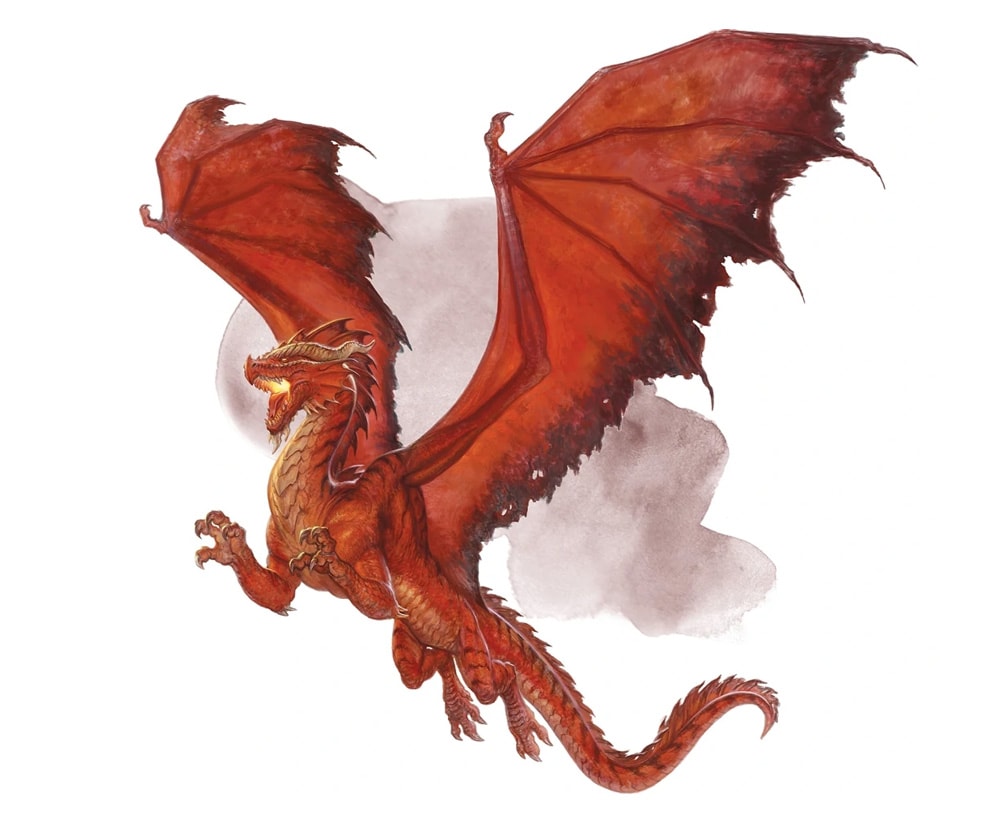
For creatures, we can divide them into two different categories: either resistant or immune to fire. With this in mind, here are a few creatures that you would find near locations with lava.
I will be adding the creature’s challenge rating(CR); the CR is a way to determine if this creature would be a match for a party of four adventurers. While it is not the most accurate, it is a marker to judge whether your party is strong enough or still not ready to fight these creatures.
| Stench Kow | CR ¼ | Fire Resistance |
| Red Guard Drake | CR 2 | Fire Resistance |
| Ghost | CR 4 | Fire Resistance |
| Vrock | CR 6 | Fire Resistance |
| Goristro | CR 17 | Fire Resistance |
| Magmin | CR ½ | Fire Immunity |
| Brass Dragon Wyrmling | CR 1 | Fire Immunity |
| Fire Elemental | CR 5 | Fire Immunity |
| Fire Giant | CR 9 | Fire Immunity |
| Balor | CR 19 | Fire Immunity |
That’s quite a varied roster; from dragons to elementals to fiends, many things can call lava-filled locations home. Whether in the material plane or the plane of fire, even the layers of hell can be full of creatures that you can run near lava.
With these in mind, you can use them to take advantage of the terrain, lobbing lava or trying to drag the players into the fiery pits. Maybe the players need to traverse a volcanic field to access a temple or a treasure that lies beneath hell itself. There are many ways to incorporate this damage into the story and these creatures as obstacles.
Lava in Real Life
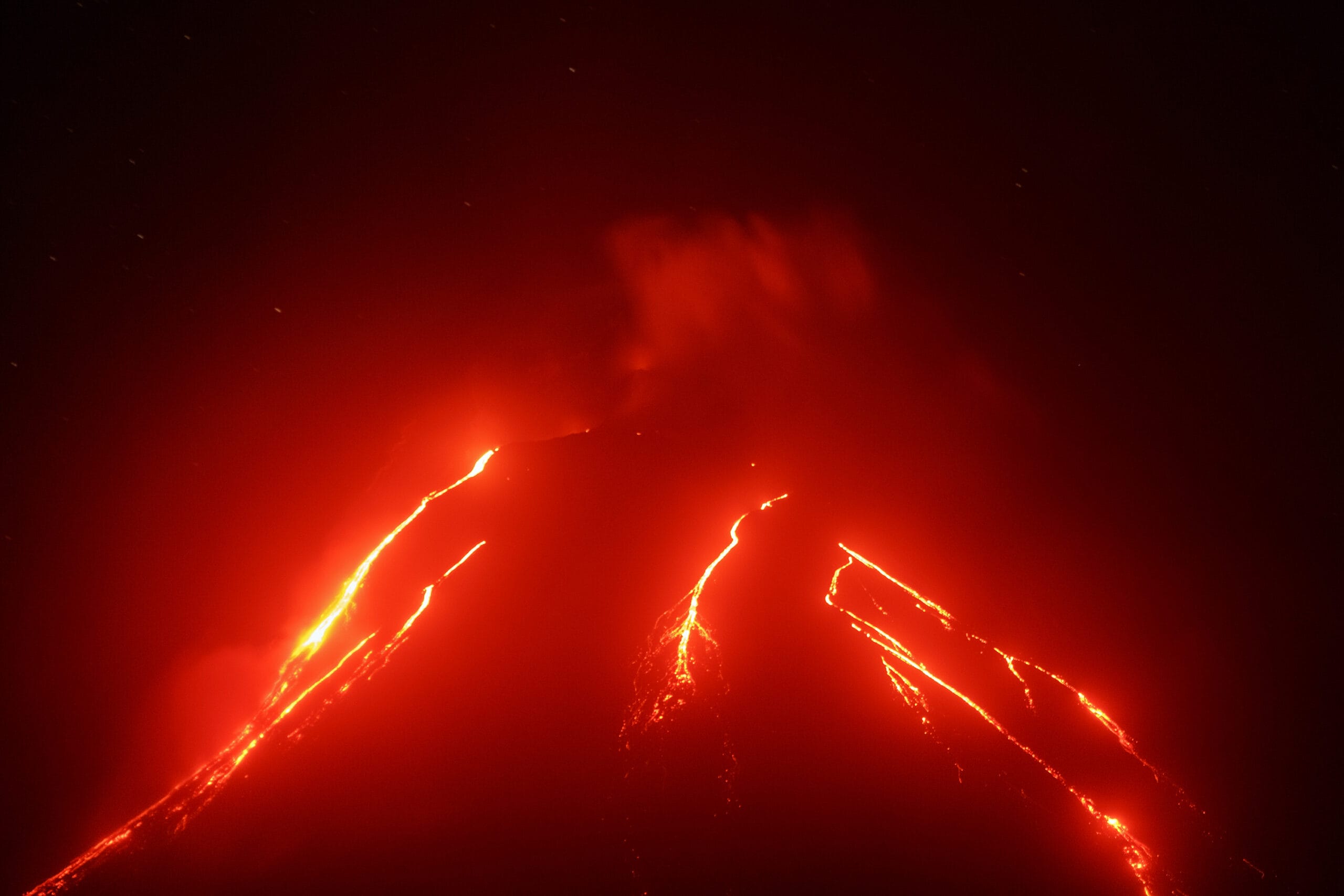
As of the most recent news, no one knows how lava feels, only that it is extremely hot. Being molten rocks, people suspect it to be in a semi-liquid state more akin to syrup but cannot indeed confirm if you can be submerged in it as the temperature would burn you before you could try. We can guarantee that it is insanely hot, from 2140° to 2200° Fahrenheit, taken from measuring Hawaiian volcanos.
Humans can survive a maximum of 101.14° Fahrenheit; lava is well over ten times hotter. So it stands to consider that regular humans will almost instantly melt in the heat upon getting into contact with lava.
With this in mind, how do characters survive lava? How can some of them practically swim in lava almost endlessly?
Dm’s Interpretation
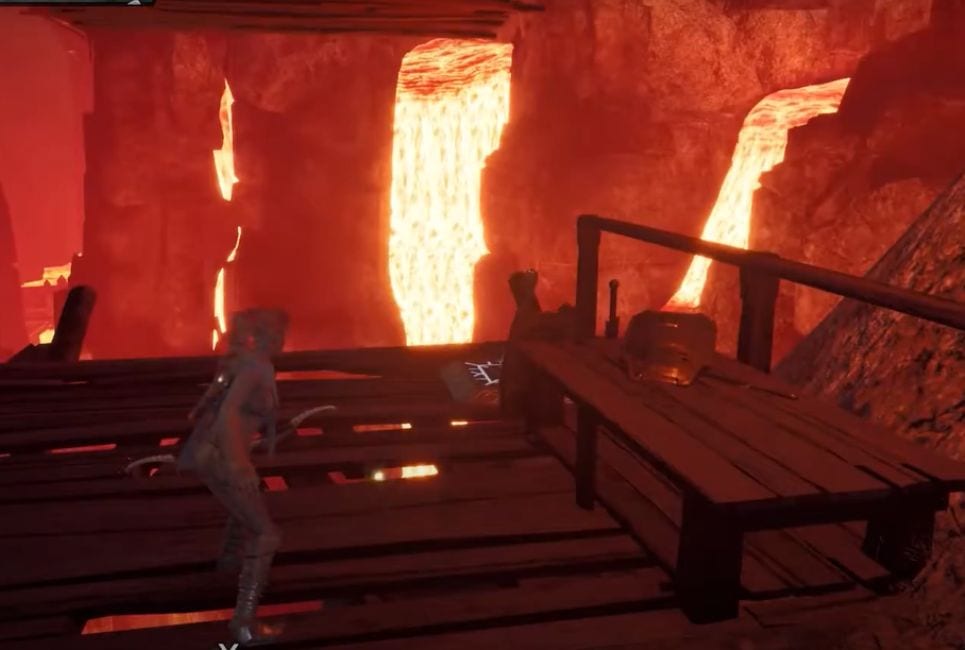
That is a good question, and in this part, I will be explaining it in the same way I explain to my players how they survive seemingly impossible odds. Firstly you must suspend your disbelief for the moment. Due to magic, gods, or other things, most people can transcend humanity and achieve superhuman feats.
Aside from gaining resistances or immunities to fire damage and heat, let’s look at the damage that lava deals compared to the average health of players. Taking it directly from the DMG, wading in lava does 10d10 or 55 on average and fully submerged does 18d10 or 99 on average.
Assuming a constitution score of 0 and no resistances to fire, the wizard and sorcerer have a maximum hp of 82 at level 20. On the other end of the spectrum, A Barbarian Class with the highest hitpoints have 142 at level 20, with the remaining classes between 103 and 124.
That is not a lot of hit points, and worse yet, the caster classes will die instantly upon being submerged in lava. Even the tankiest class can only survive two rounds in there. So why is there a myth that characters can survive swimming in lava and falling from insane heights?
The Math

For one thing, this myth mostly surrounds the Barbarian and the Fighter, classes that are famous for their endurance and large health pools. So let us assume that they have put all their points into Constitution and have the maximum possible in health. For this example, I will be using the barbarian as he has the most among the player characters.
With a constitution score of 20, using a Manual of Bodily Health to bump it up to a 22. Then getting the Tough Feat which adds (level x2) HP, along with equipping a Berserker ax which adds another (level to HP); assuming you rolled maximum on your HP while leveling up and also assuming you are a Hill Dwarf (which adds your level to HP) this is what the math would look like.
120 (Constitution) + 240 (Max HP Barbarian) + 40 (Tough) + 20 (Berserker Axe) + 20 (Dwarf) = 440 max HP.
Let’s say that the casters in the party band together to help your Barbarian in this endeavor and have cast Protection from Energy (Fire), a 9th level Aid, and Heroes Feast. So let’s add 40(Aid) + 20 (Heroes Feast).
Here’s our guide with everything you need to know about the Heroes Feast in 5e.
Your Barbarian now has 600 HP and is resistant to fire damage meaning he effectively has double his HP for fire damage. Even assuming he is taking the maximum possible damage from being submerged in lava (180) every round. The math looks as follows.
600 (HP)/ 90(fire resistant)= 6.67
He can survive around seven rounds fully submerged in the lava. This is also assuming that he receives no healing while he swims in lava, given that around is, on average, six seconds in real-time (though this depends on the DM); he can survive for half a minute before needing to exit the lava.
Does that mean lava is weak?
Absolutely not! A regular villager has 4HP, which means that your players are several hundred times more potent, and lava would destroy anyone else. This also does not consider the heat that emanates from the lava, which would also be doing damage in theory.
Your players are Heroes or, if not level 20, heroes-to-be. They are meant to do superhuman tasks; look at Hercules and his thirteen labors; I wouldn’t think a regular person can fight a hydra. However, if you want to add more environmental hazards to make your world seem more realistic and fleshed out, why not check out the next section?
Weather Effects
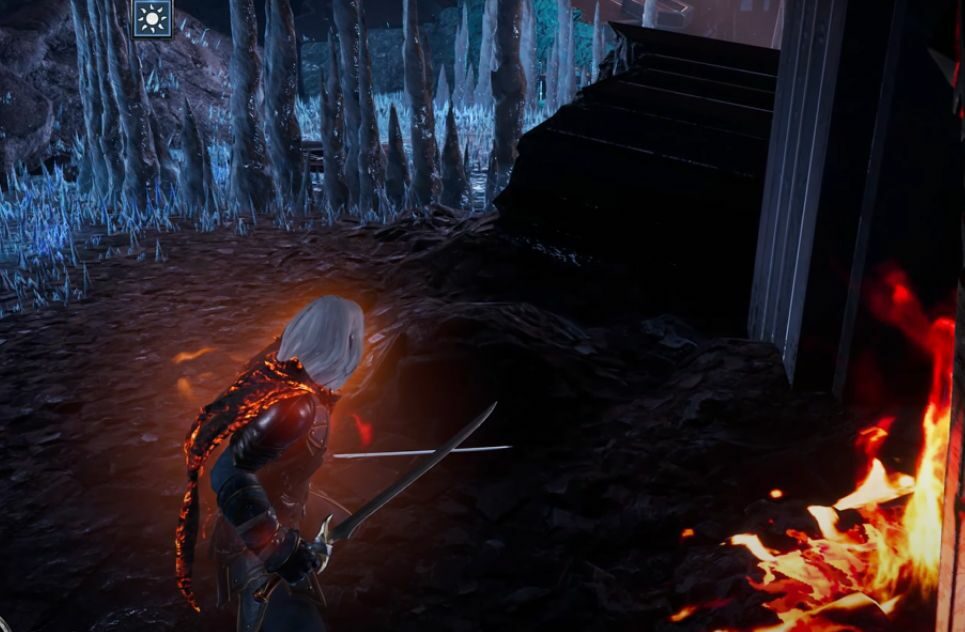
In D&D, many effects happen due to extreme weather or conditions. Wandering in snow or sand storms, perhaps exploring underwater or within volcanos, leads to many effects that your players may face—exhaustion from heatstroke or disadvantage from chilling winds.
With how varied the world is, aspiring dungeon masters will eventually encounter a situation where they make their players have to trek through hazardous lands but do not know how to affect the players in those lands mechanically. These are a few entries from the (DMG) that help with that problem.
Chapter 5 of the DMG, aside from introducing how to build a world or roll one up, also shows how to create deathly environments. From artificial ones like dungeons to naturally made weathers and locations, it has many suggestions on roll tables such as areas with no magic or areas covered in a magical fog. Since we are looking for environmental effects, look towards p110 for the more detailed and lore-filled version.
This is the list of environmental effects and their mechanical representation:
Extreme Cold
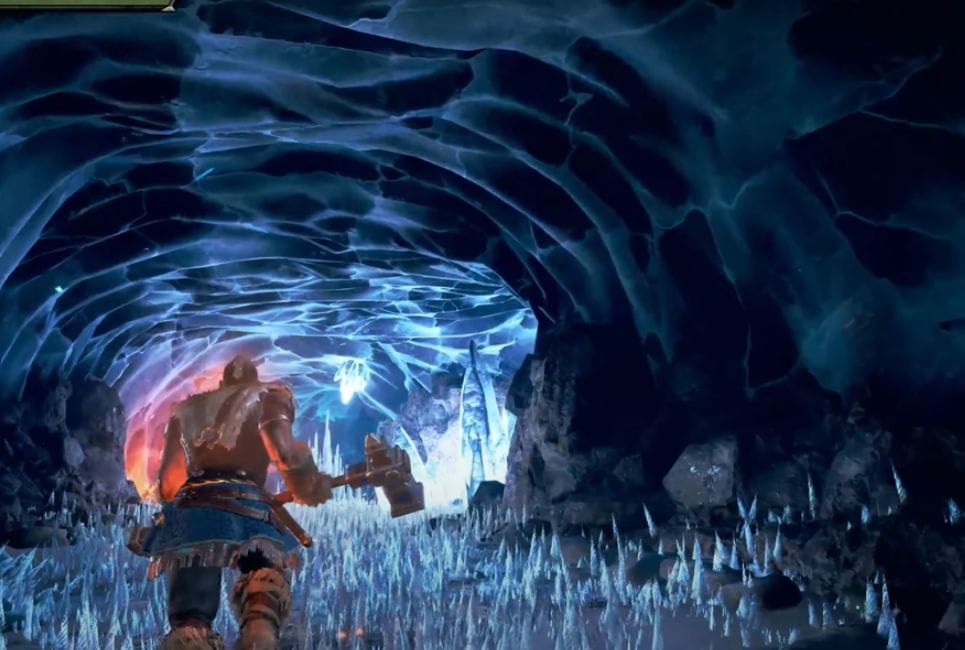
When traveling in an area whose temperature is 0° Fahrenheit and lower, creatures exposed to the cold must succeed on a DC 10 Constitution saving throw at the end of each hour or gain one level of exhaustion. Creatures with resistance or immunity to cold damage automatically succeed on the saving throw, and creatures wearing cold-weather gear.
Pretty realistic, at least as far as a game can take it. So make sure that you bring the right clothes; otherwise, you might freeze before the fight begins.
Extreme Heat
When the temperature is above 100° Fahrenheit, a creature exposed to the heat and without access to drinkable water must make a Constitution saving throw at the end of each hour or gain one level of exhaustion.
The DC is 5 for the first hour and increases by 1 for every succeeding hour. Creatures wearing medium or heavy armor or in heavy clothing make this saving throw at a disadvantage. Similar to extreme cold, creatures with resistance or immunity to fire damage automatically succeed on the saving throw.
This is more realistic than cold because the difficulty constantly increases while you are there as if the adding effect of heatstroke is physically draining you over time.
High Altitude

Creatures that need to breathe find it taxing at 10,000ft and above altitudes. Each hour such a creature spends traveling at high altitude counts as 2 hours to determine how long that creature can travel.
Unlike the previous two, this is more drawn-out exhaustion, there is no saving throw, but you get tired much faster.
Strong Winds
This imposes a disadvantage on ranged weapon attack rolls and Wisdom (Perception) checks that rely on hearing. Strong winds extinguish open flames, disperse fog, and make nonmagical flying impossible. A flying creature in strong winds must land at the end of its turn or fall. Strong winds in a desert can create a sand storm that imposes a disadvantage on Wisdom (Perception) checks using sight.
Strong winds are pretty rough, especially if you consider that they can be encountered while under the effects of another hazard. Is it realistic? I would say so, but I’ve never seen a dragon fly through a storm, so I can’t be sure.
Heavy Precipitation
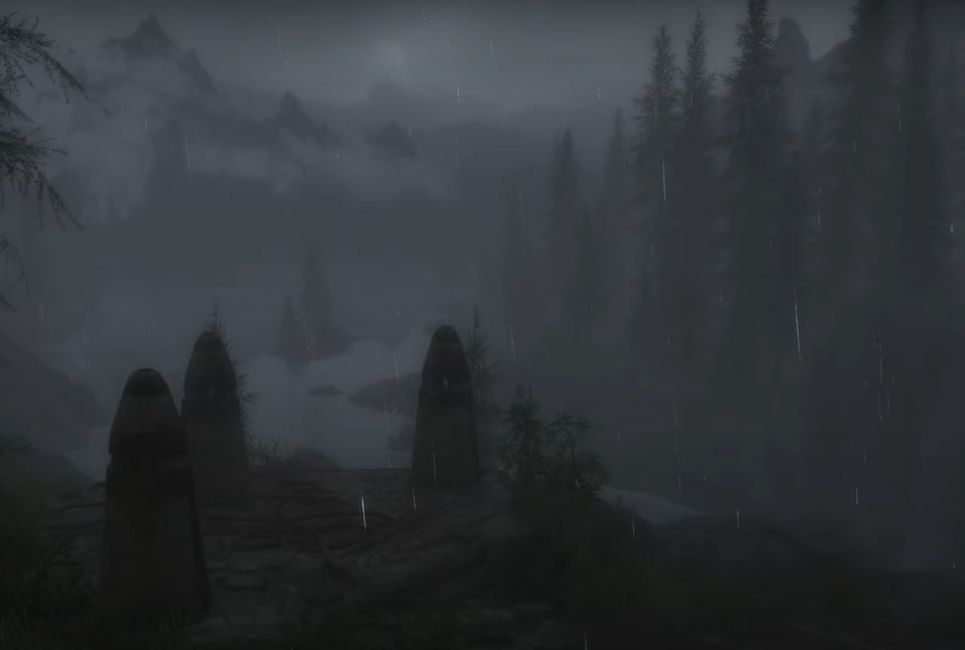
This considers heavy rains and heavy snowfall as precipitation. Everything within the rainfall is considered lightly obscured, and creatures within the area have a disadvantage on Wisdom (Perception) checks that rely on sight; heavy rain, in specific, extinguishes open flames and gives a disadvantage on Wisdom (Perception) checks that rely on hearing on top of the regular effects.
This is the least painful but most common environmental effect to see. So why not use this to set up the tone of the adventure your players will be going on.
FAQ
Question: Does lava do fire damage?
Answer: Yes, it does. Unlike fall damage which does not have a damage type, lava is considered fire due to the heat and the burning.
Question: Does fire resistance work on lava?
Answer: Yes, it does. Lava does fire damage, so fire resistance and immunity work on the damage taken from lava.
Question: Can you walk on lava?
Answer: Hypothetically, no. D&D treats lava like a liquid hence why you can be “Submerged” in the lava; however, depending on your DM, you could consider water walking the same as lava walking, just with more damage.
Conclusion
Lava Damage is insane; as one of the few environmental hazards that do direct damage, this one does the second most but does it every turn so long as conditions are meant. While this may have been longer than expected, I believe that when it comes to D&D, the flavor comes from the details. If you have anything to say or any arguments, why not leave a comment? Stay safe, and keep rolling on adventurers.
- Prestige Classes 5e Guide - September 20, 2022
- Rod of the Pact Keeper 5e Guide - September 15, 2022
- Sanctuary 5e Guide - September 14, 2022

